If you were to walk into my garden any summer you'd see every one of these things at work. These are the tips that usually end up being the answer to any of the gardening questions I get from friends and family.
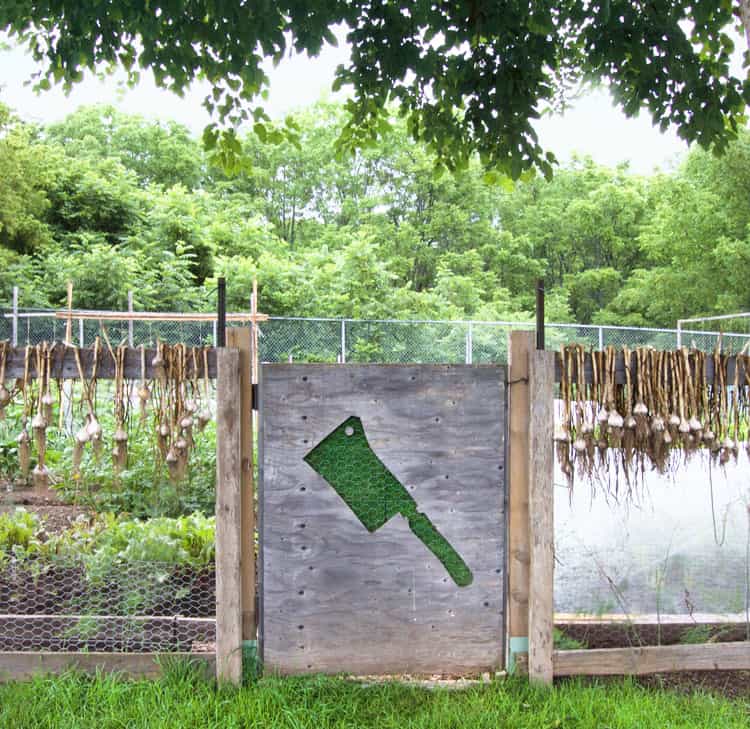
Why is garlic hanging on the fence? To introduce you to your first tip. There are also tips within the tips which of course makes this much more exciting.
This is a big post with a lot of information but it's all easy to remember if you just write it all down 5 times in a row and then memorize it.
OR you can download the quick tip sheet with only the essential information. That free download opportunity is coming up for you about halfway down the post.
An Overview of My Garden
In case you're new around here.
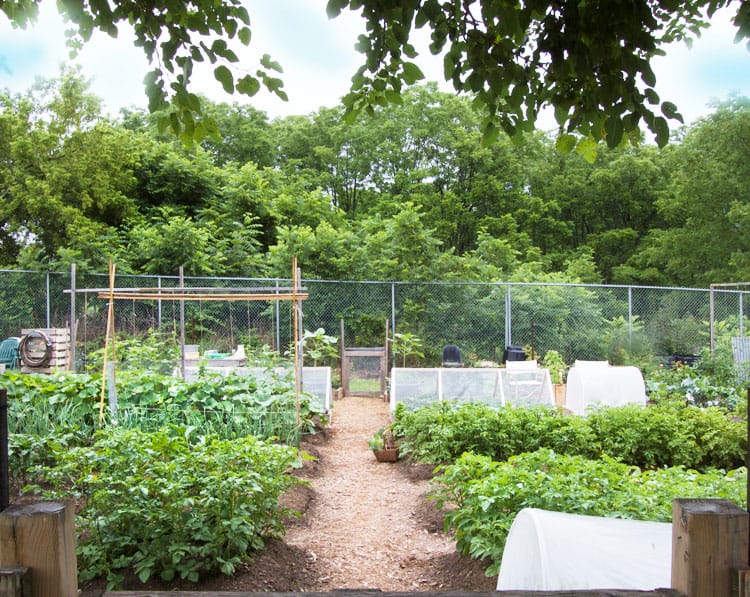
My garden is 40' x 40' and in classic rows mainly because I actually prefer the look and feeling of long rows in a garden. It feels nostalgic to me.
There is a central path that runs from the front gate to the back gate. Off of either side of the path are 16' rows each planted with a variety of things.
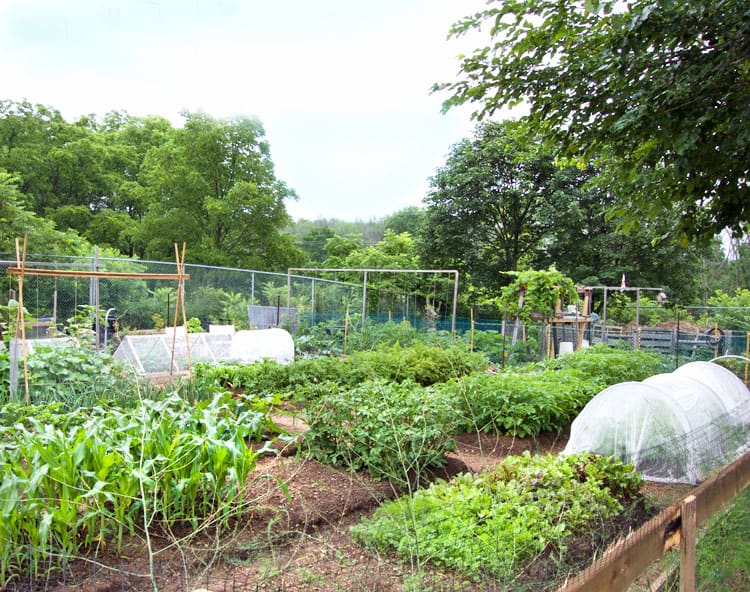
I used raised soil beds without any wood framing. Wood sided raised beds looks nice, holds soil well and prevents weeds on the sides of the beds. But they are expensive and constantly need to be replaced.
Here we go ... the tips I didn't know, but now do and therefore want to share with you.
Table of Contents
Tip #1 - Curing Garlic & Onions
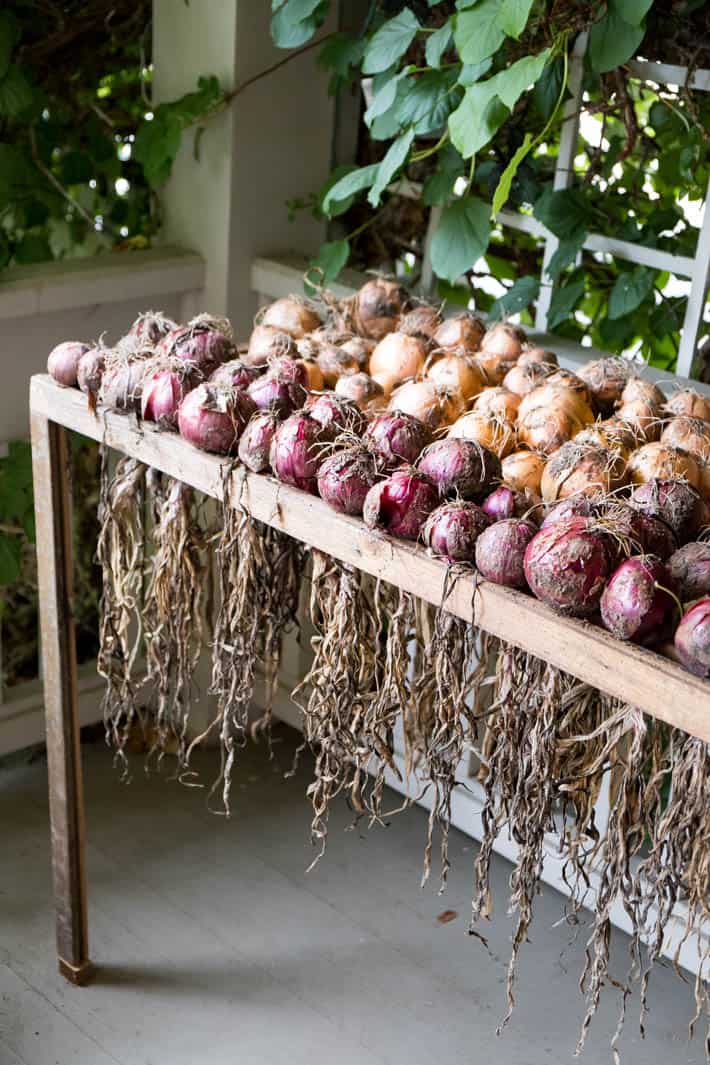
Garlic and onions needs to be cured for 2 weeks outdoors in the shade. Doing this lets the outer skins slowly dry out while the inside retains all of its moisture. Curing extends garlic and onion shelf life so they'll store longer.
Tip #2 - No dig gardening
I've been no dig gardening since 2017. I mean, you know, for the most part. There's only one Charles Dowding.
No dig gardening means you do not till, poke, prod, lift or disturb the soil. This benefits the top layer of soil and all the microbes, worms and other crawlies that are keeping your soil aerated, fed, and healthy.
Each year to feed the soil you add a few inches of compost on top of your beds and plant directly into that.
A word about weeds and no dig
No dig also helps eliminate weeds because if you aren't moving and disturbing the soil, you aren't exposing any of the thousands of weed seeds that are in your soil to sunlight and rain.
Every time you turn over a shovelful of soil, you're exposing all the weed seeds that were deep in the soil to the top of the soil. These weed seeds had no intention of sprouting until you flipped the soil and put them in a front row seat to rain and sun.
ALTERNATIVE - Short on compost? Instead of covering your beds with a 2-3" layer of compost, dig a hole for your seedlings and fill the hole with compost for planting in.
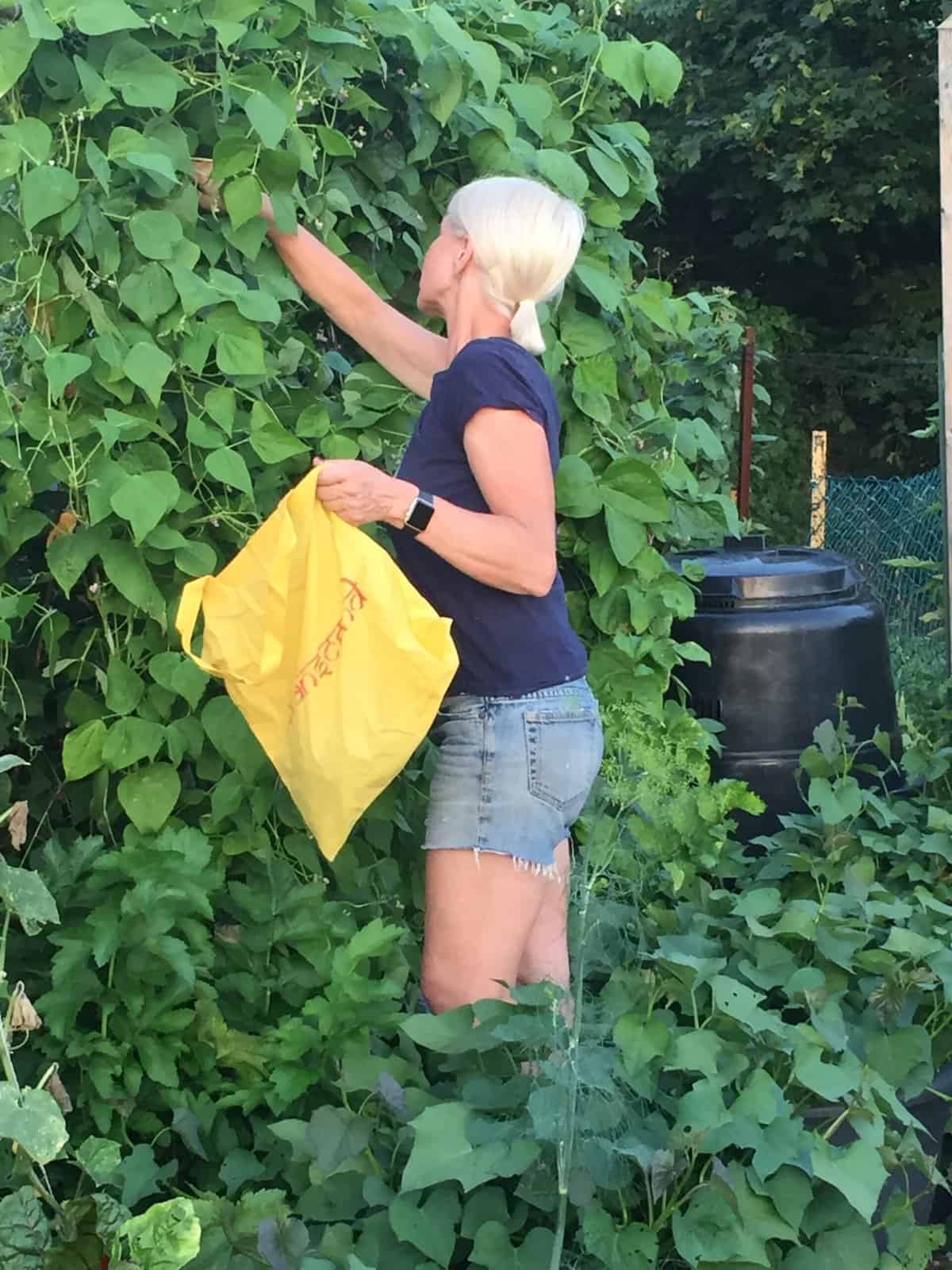
The bean trellis! How do you do it?
Tip #3 - Trellising
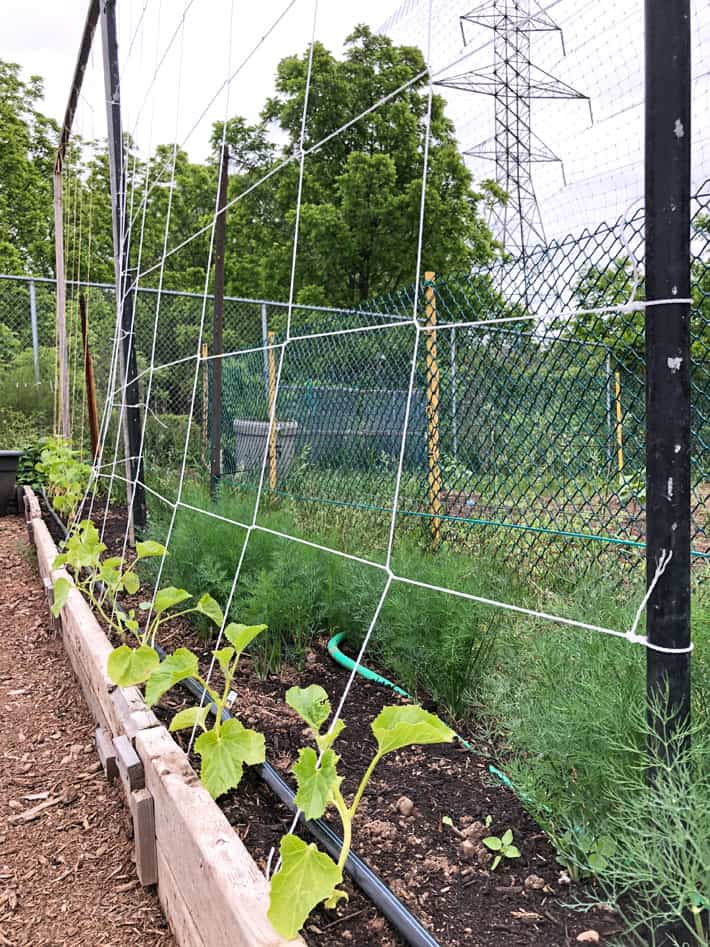
To make a bean (or cucumber) trellis that'll last a year or two buy some wood 1 x 1's. Either hammer them into the soil or dig a 1' deep hole and place a length of wood into each hole.
Add another piece of wood lengthwise across the top of your 2 staked 1x1s and attach it by screwing it in. You can either run string back and forth between the wood to create a trellis or use plastic netting or chicken wire for the plants to grow on.
You can also use metal T Posts which will last for years and years and years and years and years until you don't even like beans anymore.
Tip #4 - Weed suppression
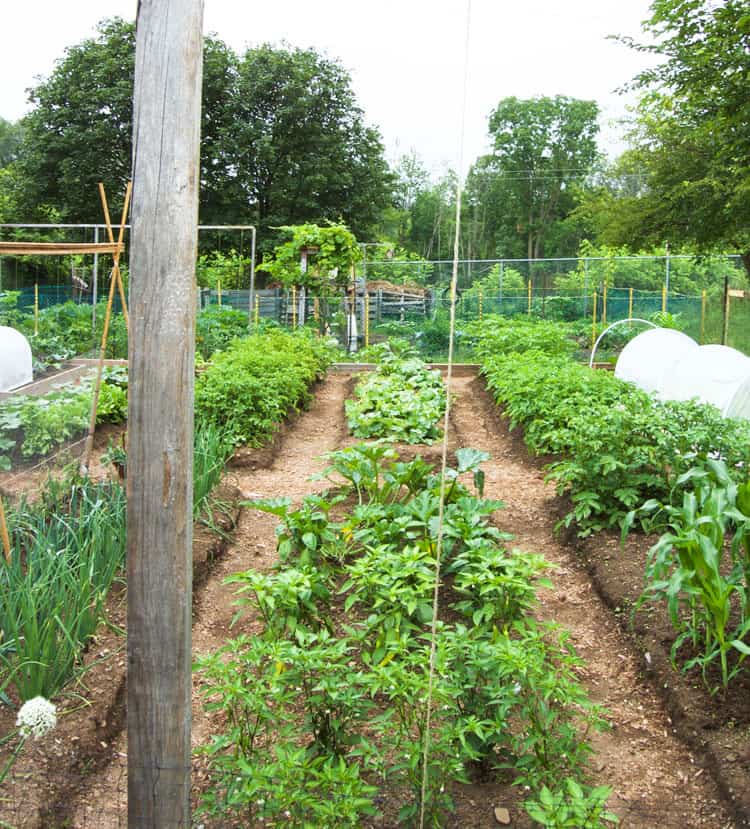
To stop weeds in either beds or paths lay down a layer of newspaper then top it with 2-3" of natural, cedar mulch. The newspaper eventually decomposes at which point you just need to top up your mulch every year.
Alternative - You can use professional grade landscape fabric on paths to control weeds. It works well but is slippery when wet and doesn't look as pretty as mulch. BUT it lasts longer and doesn't need to be replaced for many, many years.
Tip #5 - Corn
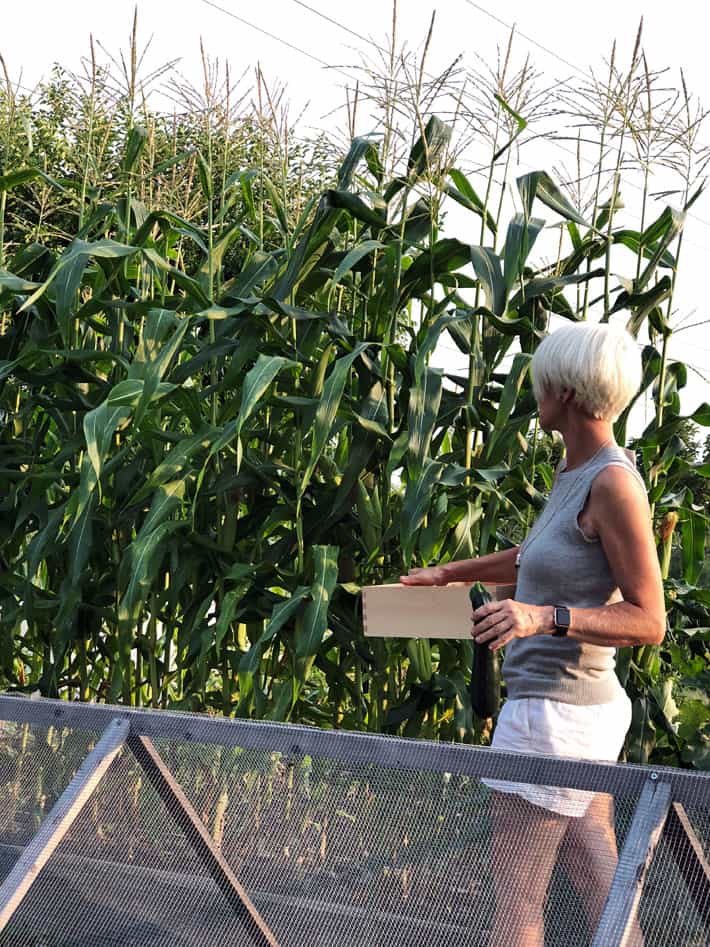
Don't grow corn in a single row. Each corn stalk pollinates those around it and it does a much better job of that if it's grown in a clump.
A square bed of corn will be way more productive than a long row.
Also, don't grow two varieties of corn near each other (especially ornamental and edible) because they'll cross pollinate and you can end up with some weird-ass corn.
Want just the essentials? Download the Quick-Tip Sheet for a glanceable version of all 20+ tips—perfect for printing and stapling to the shed wall.
Tip #6 - Carrot germination
You need plywood or wood boards. A more religious woman would use them to kneel on to pray to the Gods for carrot germination. I use them to *almost* guarantee carrot germination.
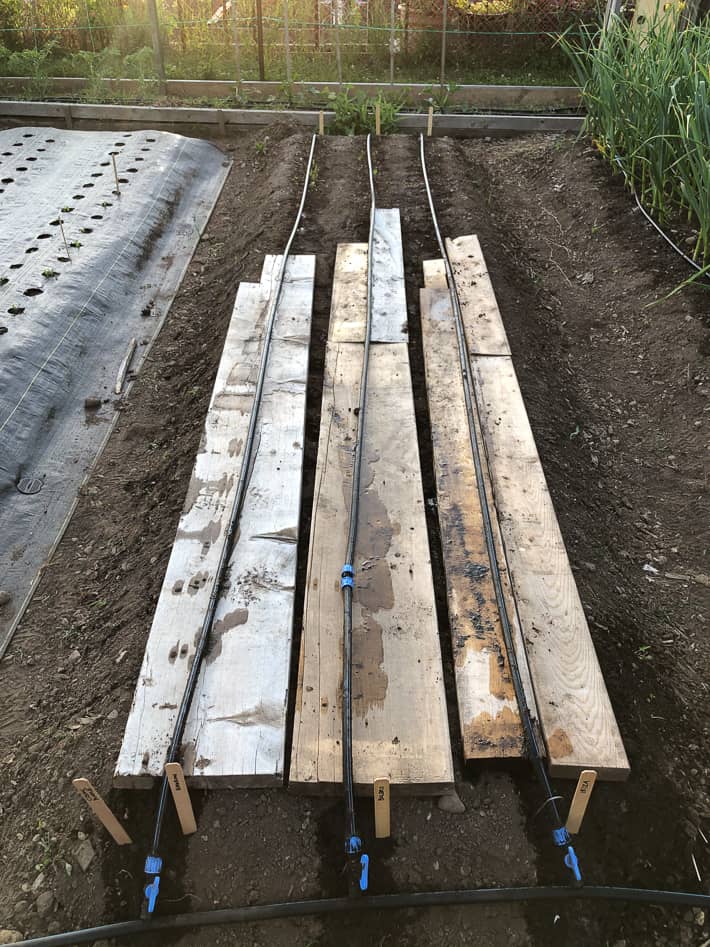
To get carrots to germinate, plant the seeds into watered soil and then cover them up for a week. Flat wood is your best option because it presses down and helps the seeds maintain contact with the soil but you can use burlap as well.
The wood or cloth helps keep the seeds damp and in darkness which they like.
Carrot seeds are temperamental.
Tip #7 - My favourite tip
Boxes, bags and baskets.
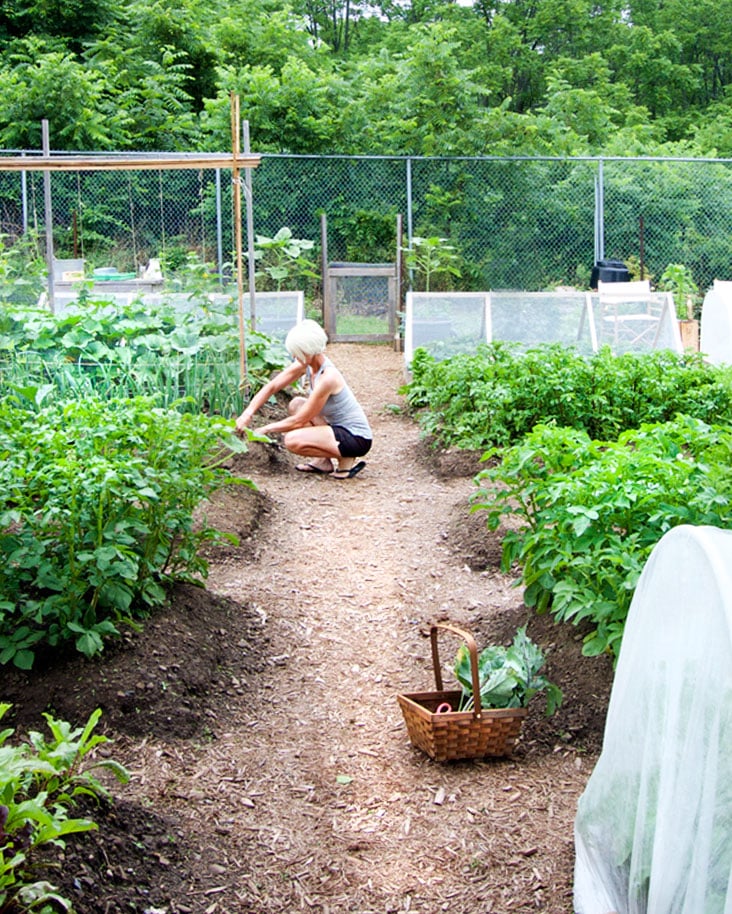
Keep bags or baskets for carrying vegetables RIGHT in your garden at all times.
ALWAYS keep something in your garden for putting vegetables in to take home, whether your home is 20 steps away or a 5 minute drive. How the hell do you think you're going to carry it all? And if you think you'll always remember to bring a bag or basket whenever you go into the garden you're wrong. We're not that smart.
Bonus harvesting tip: Don't wash your vegetables right away if you want them to store well. Brush the extra soil off of them and leave it at that. Wash them just before you're going to prepare them to eat.
Tip #8 - Row Cover
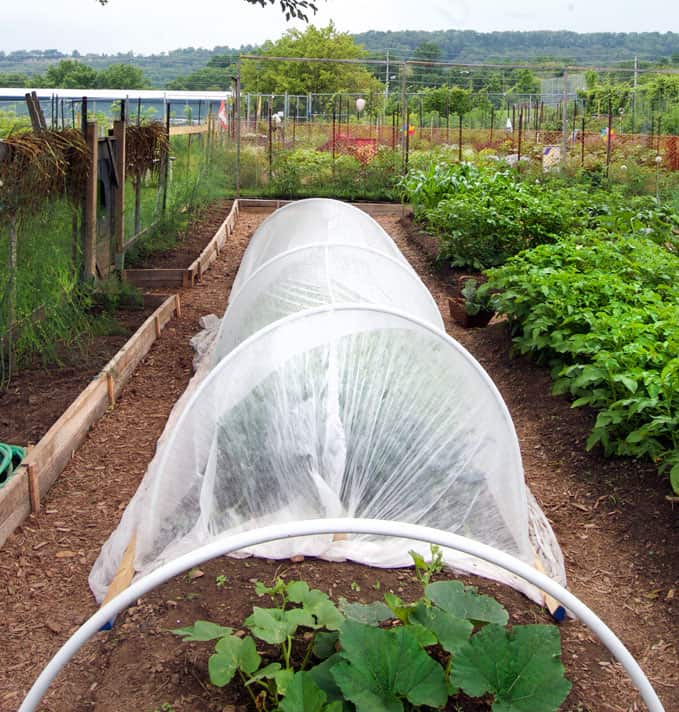
To keep crops clean use row cover.
You can either just "float" it right over the plants, holding the edges down with rocks or wood or you can make hoops out of flexible plumbing pipes.
To build a mini hoop house:
Drape row cover over the hoops and secure it to the ground using rocks, bricks, or strips of wood.
Hammer rods or bamboo sticks into the ground on both sides of the garden bed, spacing them about every 3 feet.
Slip flexible plastic tubing (from the hardware store) over each rod to form an arch. The rods must be slightly thinner than the inside of the tubing so the tubing can slide over and stay in place.
Or you can buy premade garden hoops in a variety of heights and widths.
Types of Row Cover
Generally I work with mesh insect netting or a medium weight row cover. The heavier the row cover, the less light can pass through it. That's good for protection from frost but not good for allowing enough lights to get to the plants to grow well.
Tip #9 - Potato hilling
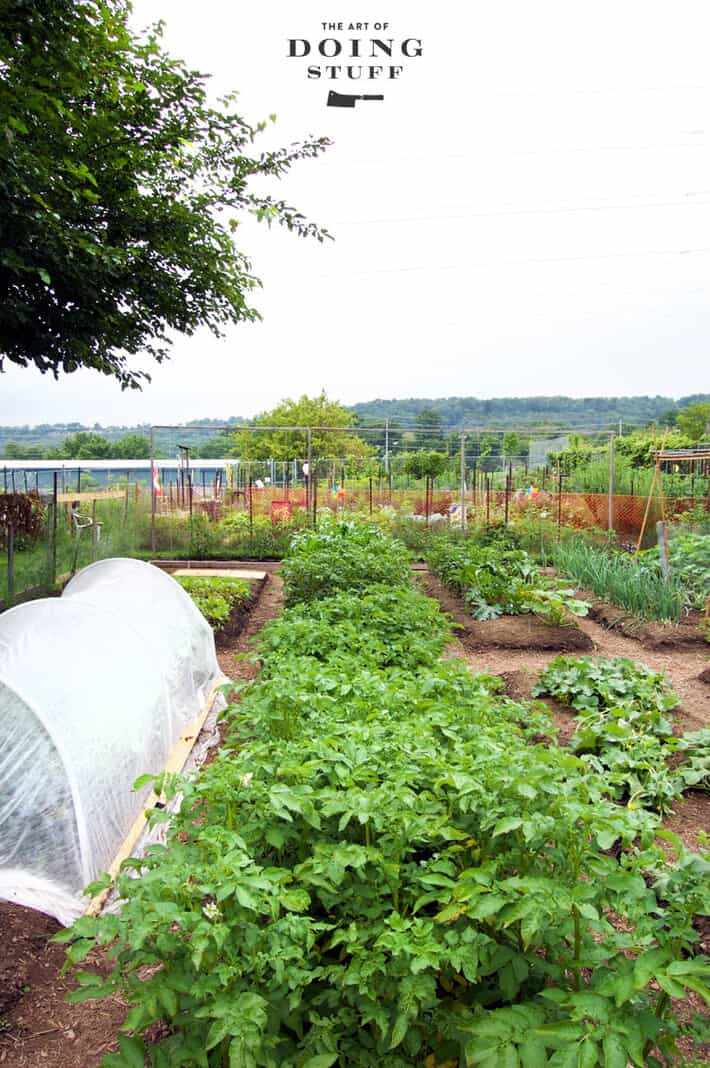
If you don't have it in you to hill your potatoes ... don't. I have never noticed any huge loss of potato production from not hilling.
Potato hilling is most necessary when you have planted your seed potatoes either on top of the soil or in the first few inches.
If you have planted deep (9-12") there's no huge advantage to hilling.
The other big hit in the garden with kids are the melons. You haven't experienced life if you haven't sat down in a garden and consumed a just picked Honeydew still warm from the sun.
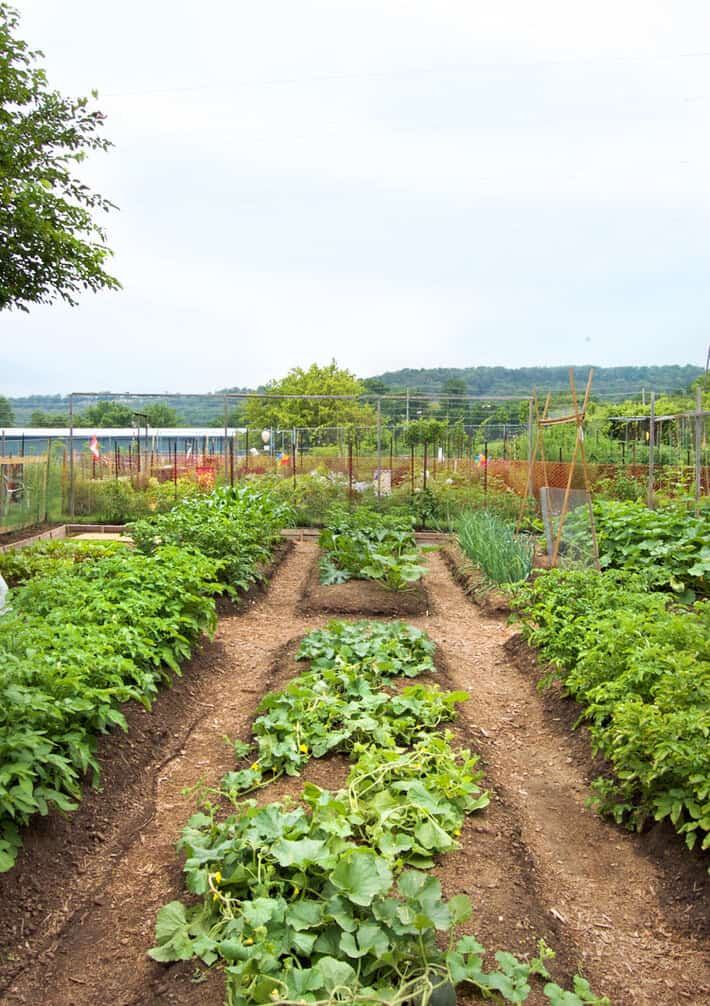
Tip #10 - Sweeter Melons
Don't water your melons as they're getting to the point of ripening. You'll just dilute them. Less water when ripening = sweeter melons.
Would you like to save this stuff?
The more melons ripening on the same vine the less sweet they'll be because they all have to share the sugars the vine leaves have produced.
If you have 2 or 3 melons of around the same size growing on the same plant pinch 2 of them off if you want a really sweet melon.
Tip #11 - Weeding habits
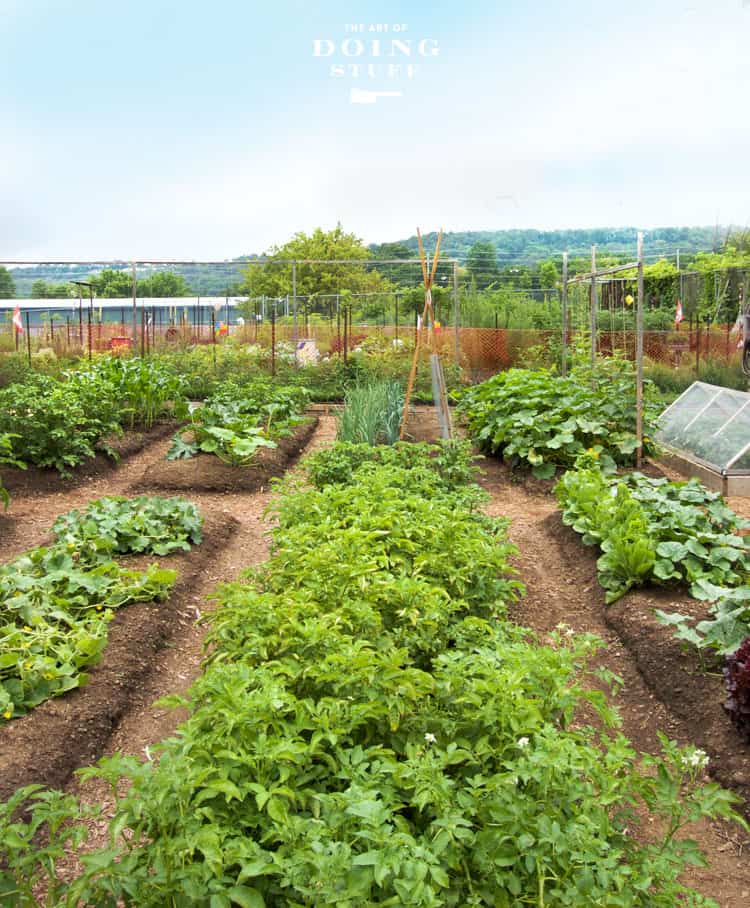
Every time you step foot in your garden pull some weeds. Make it a habit.
The more you weed the less weeds you'll have. Weeds flower and go to seed quicklyyyyy. THIS is the crucial point. If you don't pull the weeds before they go to flower and seed, those seeds will drop all over your soil and start the weed cycle again. It will never end.
If you take the time in the spring and especially for that first year to get rid of all the weeds as they appear and never let them go to seed you'll make every subsequent year more and more weed free.
Whenever I walk into my garden I keep my head down and just weed for 10 minutes. I don't even look around to see what has grown or if there's a giant pyramid of raccoons anywhere - I just weed.
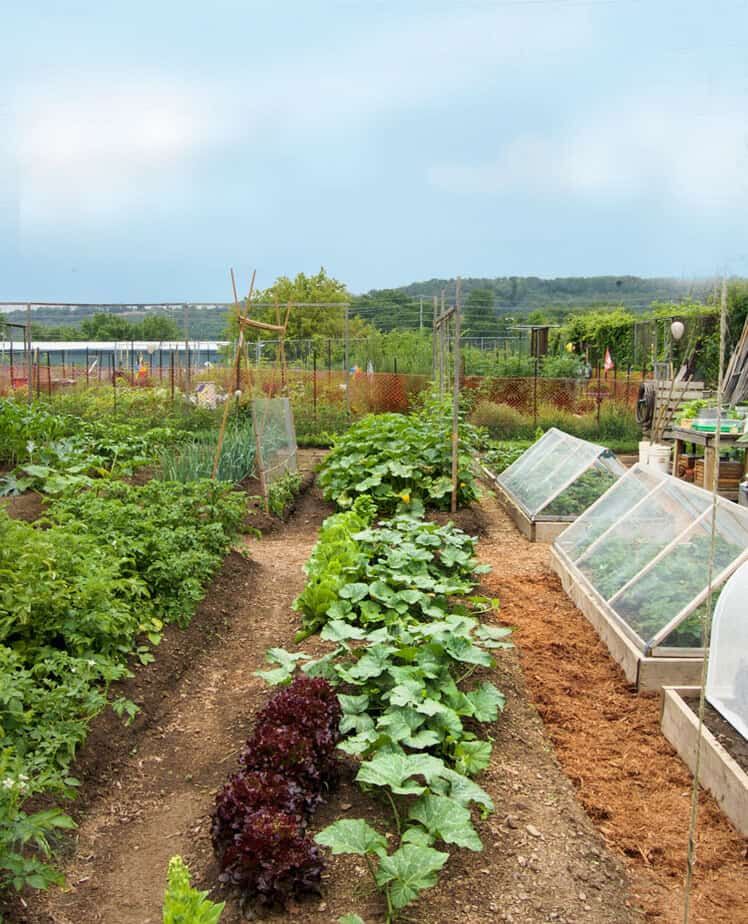
Tip #12 - Pumpkin leaf recipe
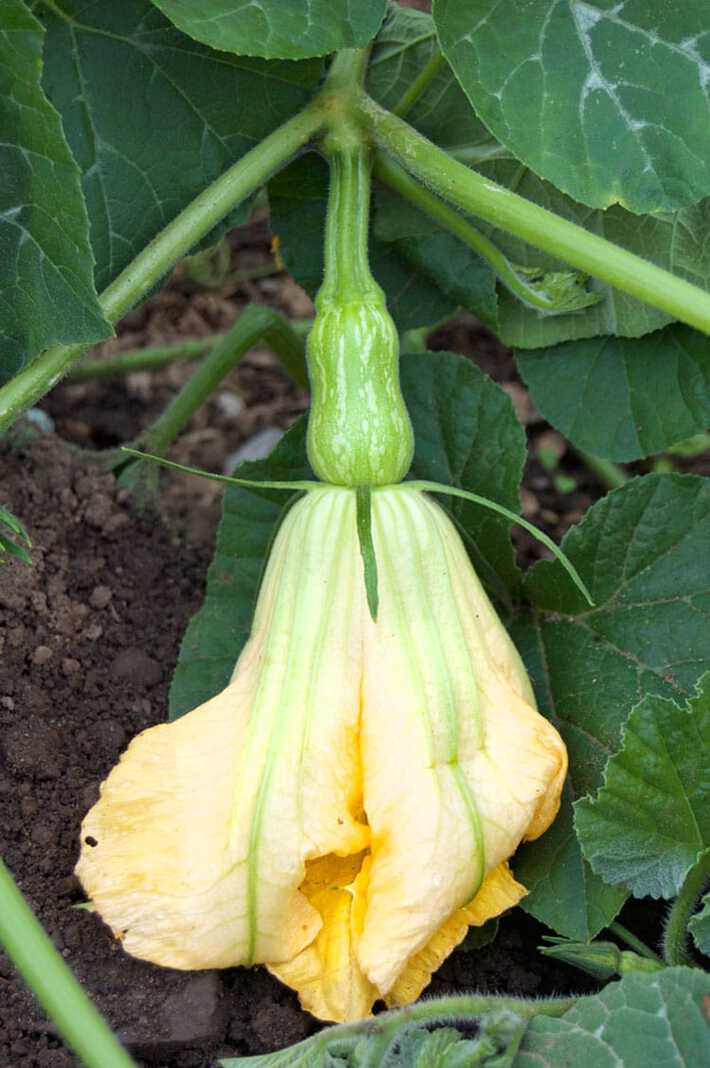
Pumpkin leaves are one of the many edible leaves we tend to just ignore. A lot of the weeds we pull are excellent for salad or as sauteed greens.
With pumpkin leaves only pick the smaller, more tender pumpkin leaves, boil them in water with some baking soda (to help soften them) for a couple of minutes, then sauté them with tomatoes and onions. The boiling also helps get rid of the prickles on the squash leaves and stem.
All pumpkin leaves are edible but the ones with the white veining are the ones my fellow gardener from Zimbabwe told me they eat.
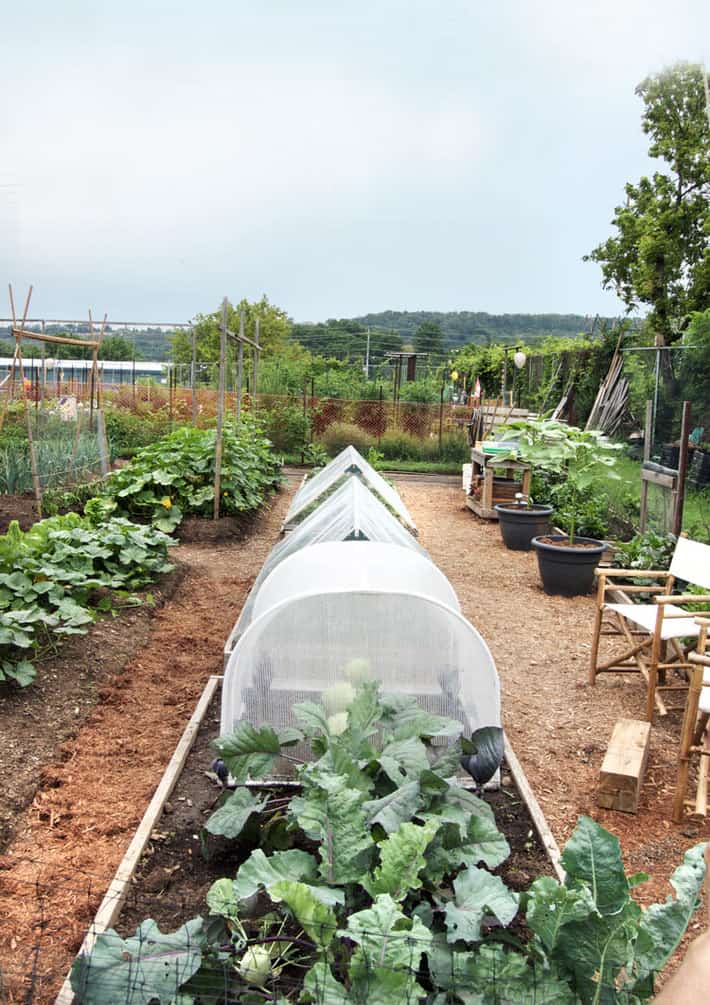
I think we need to take a break here so I can let you know I realize this is probably the least hysterical post I've ever written. But there's a lot of information to get through and my brain is focused on teaching. If I can muster up the energy I'll throw in a knock knock joke later on.
Tip #13 - Cabbage harvest
Cabbage will grow 2 or 3 more small heads after you harvest the initial large head. Just cut the cabbage off just above ground level instead of pulling up the whole plant. Within a couple of weeks it'll start growing a couple of new heads off of the base of the stalk which are a FAR more reasonable size for eating. They're perfect for roasting as a side dish.
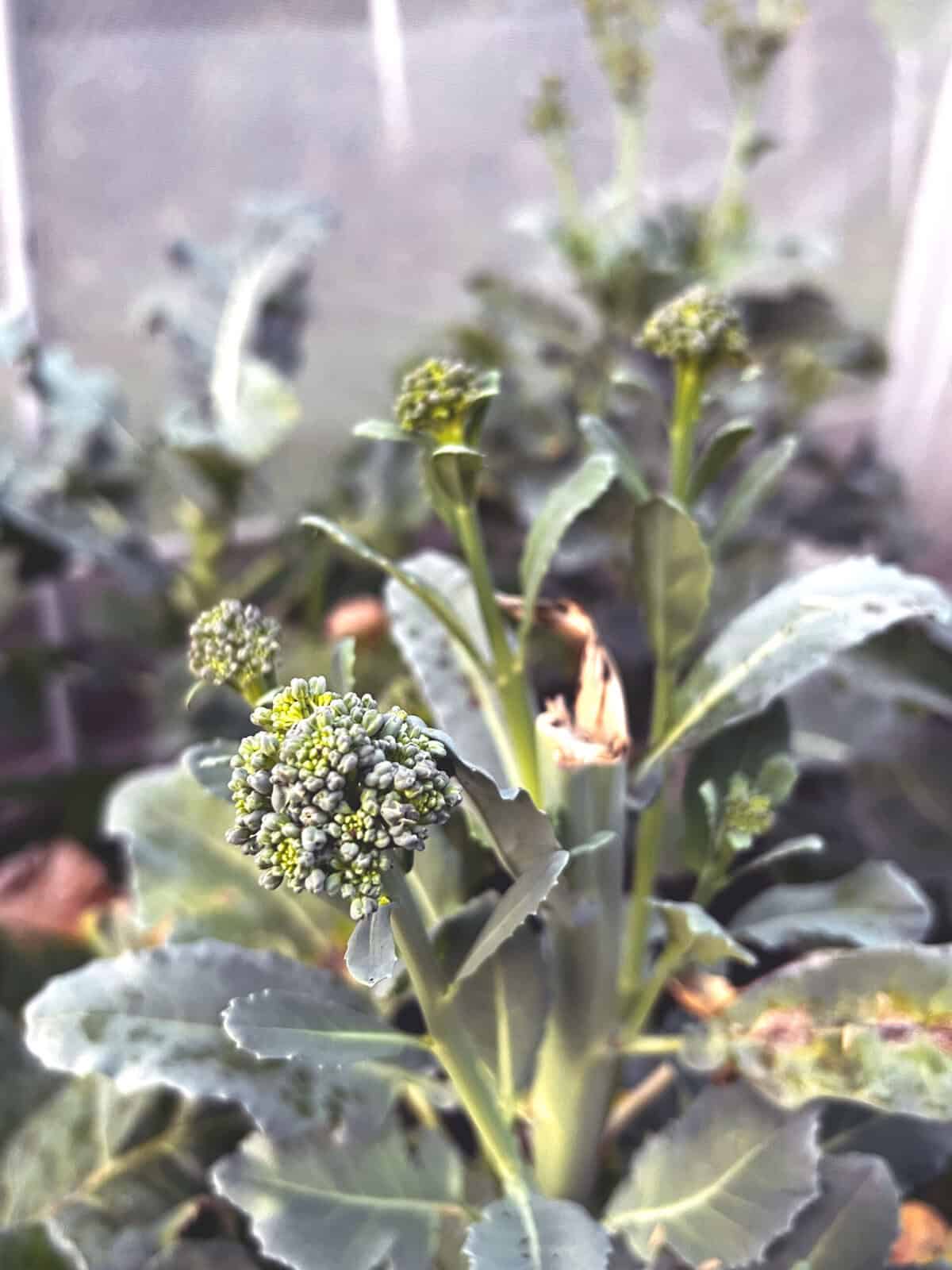
Broccoli TIP - Broccoli will also do the same thing. Just cut the large head on the top of the broccoli stalk when it's ready. Keep the stalk of the plant in tact just removing the head. The broccoli will continue to put out smaller broccoli florets from the leaf nodes along the stem.
Tip #14 - Make things convenient & comfortable
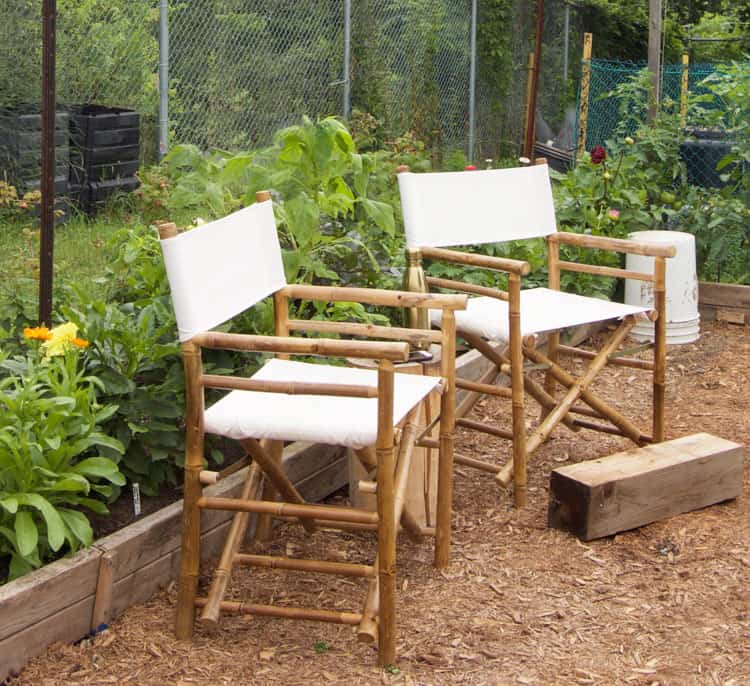
Keep a chair in the garden so you can sit on something civilized as opposed to the dirt. Or a snake. ALSO I keep overturned buckets around the garden so when I'm weeding I'm never far from a bucket to throw the weeds or rocks into. They them get dumped onto the compost pile.
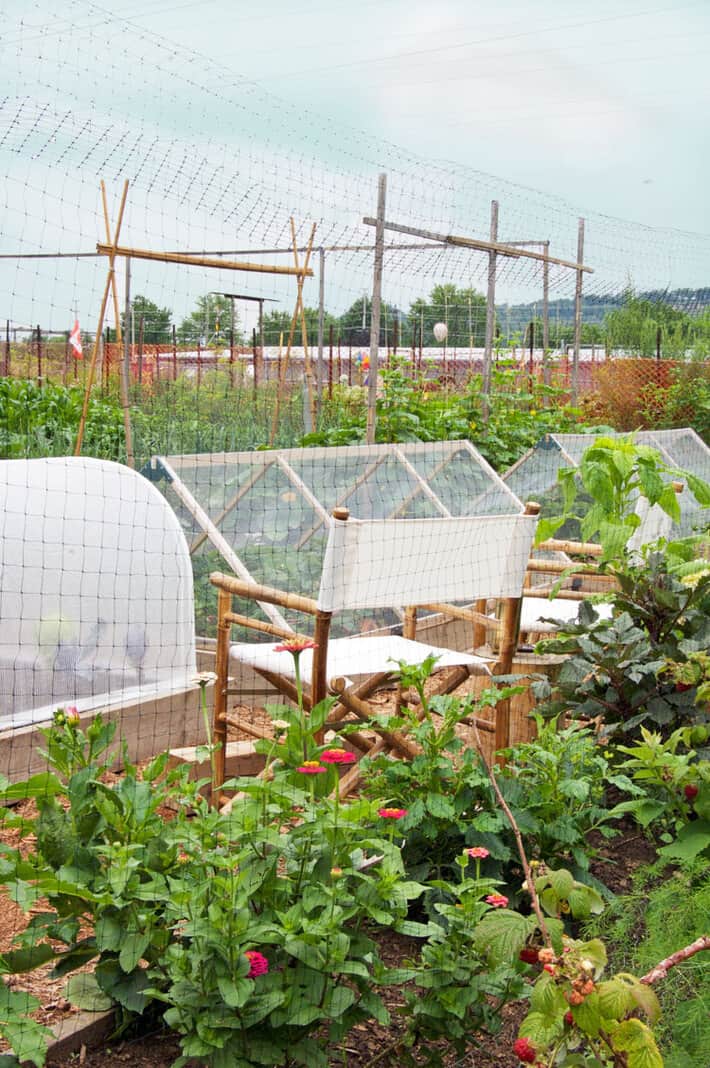
I also eliminated all compost bins in my garden because they aren't convenient. Instead I keep a huge open pile of compost that I can easy add to, remove from and turn.
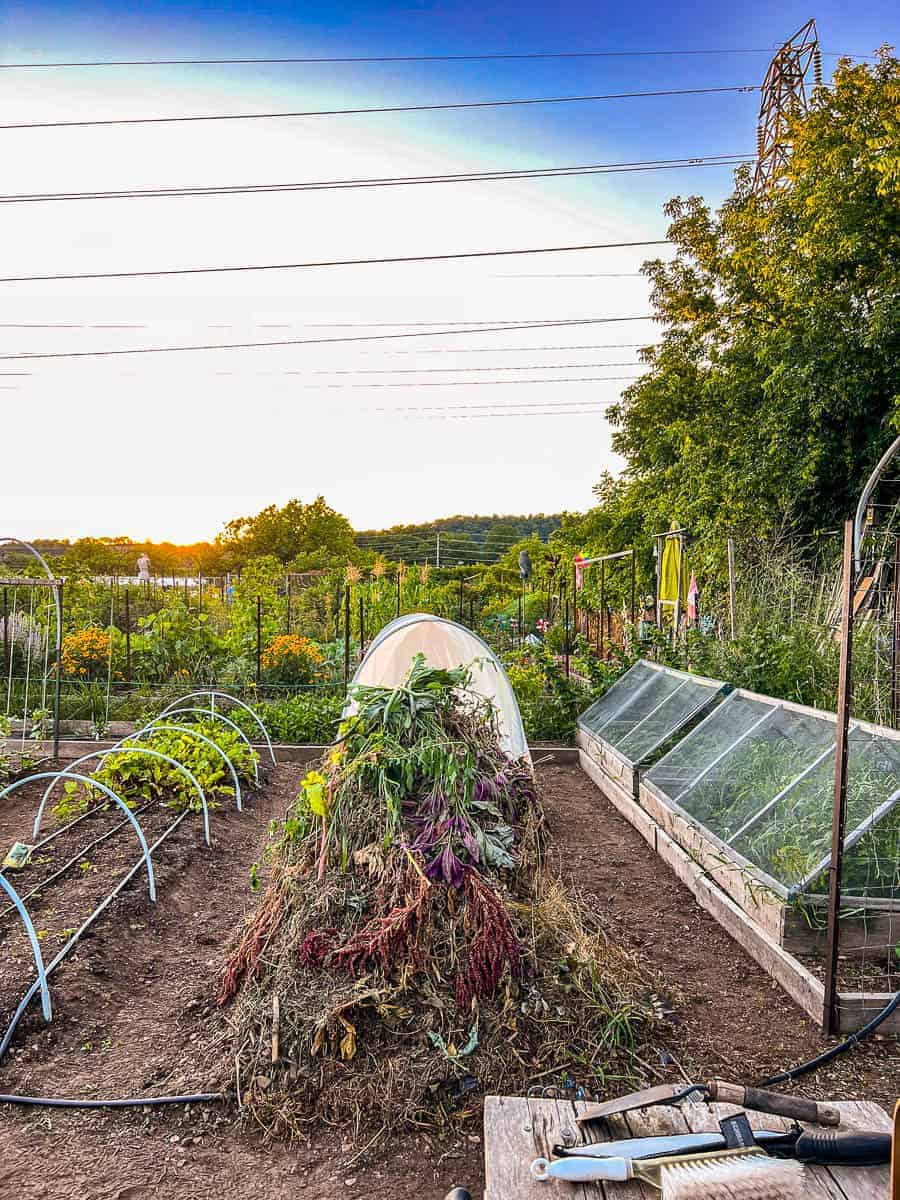
She's not pretty but she produces beautiful compost.
Tip #15 - Rabbits, Raccoons & Deer
The best way to keep rabbits out of a garden is to dig heavy metal fencing 6" or so into the ground around your garden. Rabbits will dig but generally not that deep. They'll chew but generally not through heavy metal.
The best way to keep raccoons out is with flimsy fencing. Building a sturdy tall fence will do nothing other than give the raccoons something sturdy to climb. Flimsy and lightweight is hard to climb.
So the perfect fence is one that has a base of hardware cloth dug at least 6" into the soil around the bottom, with 6' high loosely hung deer netting or hardware cloth on top.
Note: Deer netting is inexpensive and easy to work with but will rip over time and birds and snakes can get caught in it. Hardware cloth is really expensive to surround a garden with but it will last a long time and nothing will get caught in it.
Tip #16 - Snakes
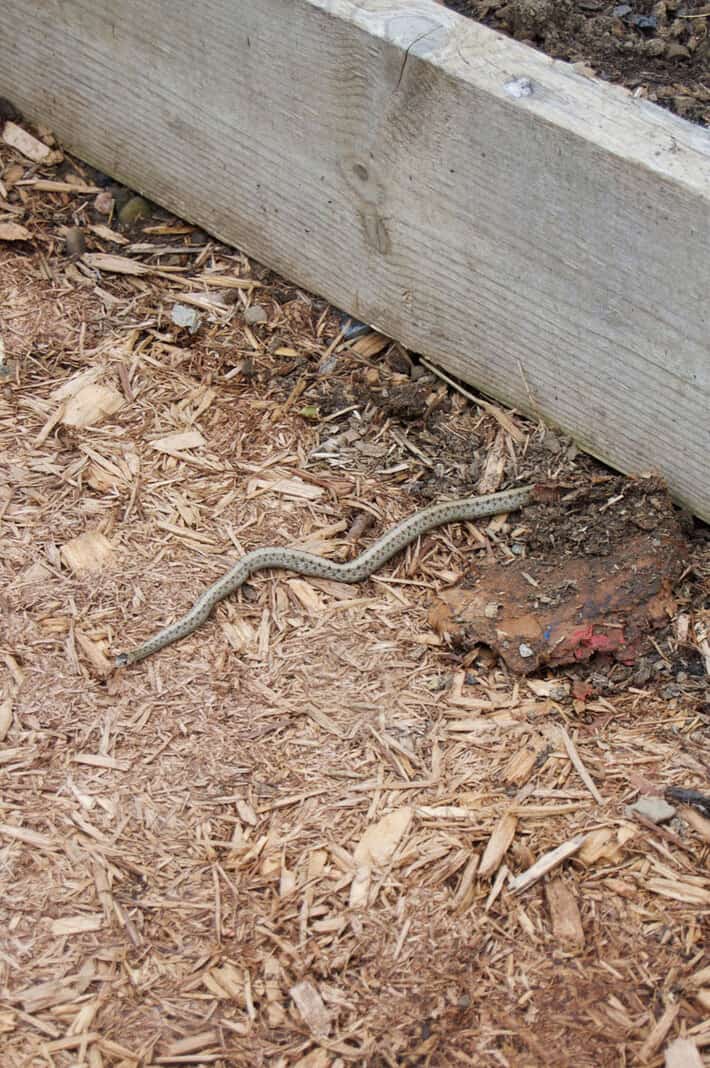
If you aren't terrified of them, you should time-share your garden with snakes. Why?
Snakes will scare mice, voles and other rodents away from your garden plus they eat bugs. Also if there's anyone you don't want visiting you in your garden, having a plot full of snakes is the most discrete way of making sure they never show up.
To attract snakes to your garden leave piles of wood around. You can see this one coming out from underneath the raised bed. They love to hide in the cracks of stacked wood and sun themselves on top. They also love to live in compost piles.
Tip #17 - Work Surface
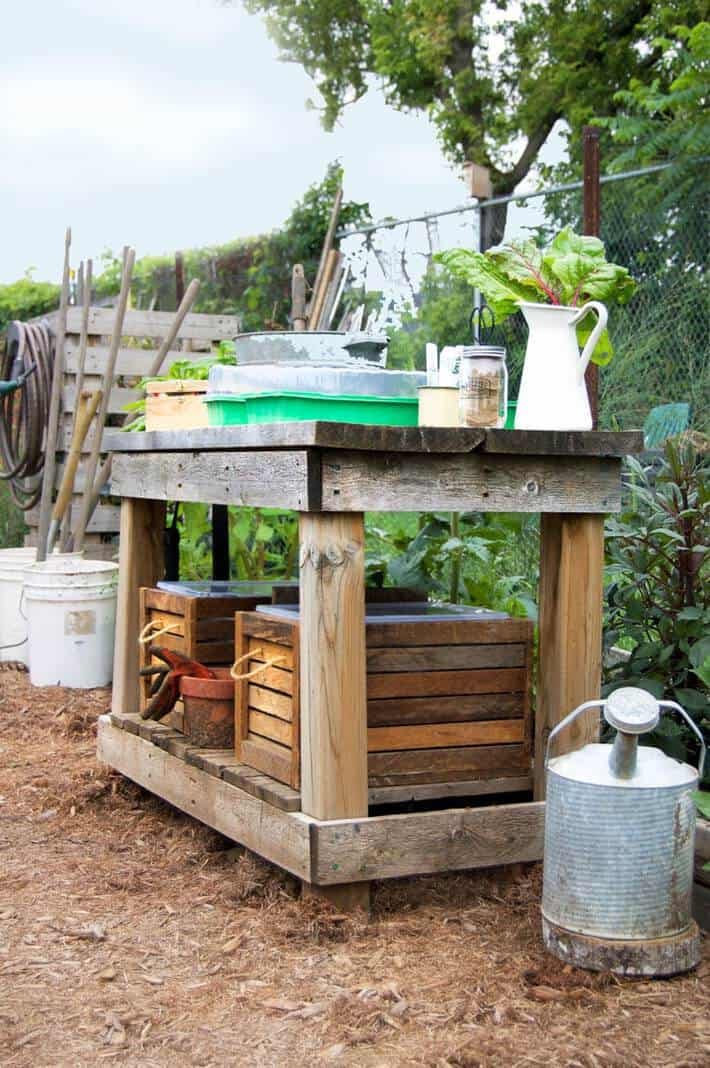
You need somewhere to put stuff. Gardening requires stuff and if your garden isn't a few steps away from your shed then you realllyyyy need somewhere to put stuff. What stuff?
- Seedlings
- Harvested vegetables
- Tools can lean against it
- Water bottle/coffee
I made this garden table out of scraps of wood and donated lumber. AS of 2025 it's in its 9th year and the top is now rotting. Everything else is good so I can just replace the two top boards.
Tip #18 - Keep planting
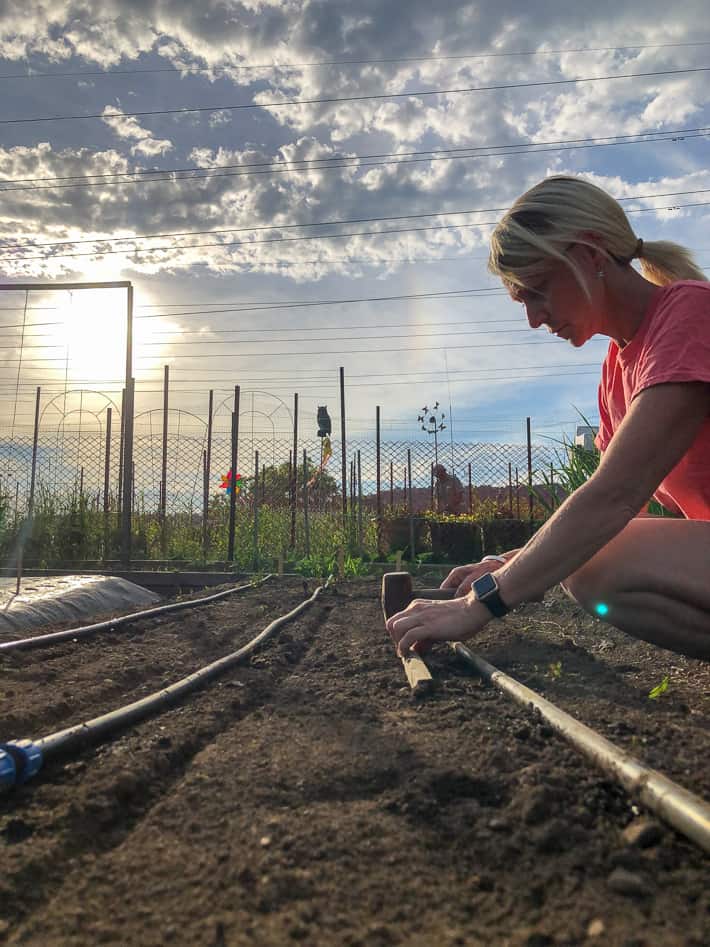
You can keep planting a lot of seeds throughout the season to make sure you have a continuous crop.
When you pull a crop out because it's done (garlic in mid July for instance) you're left with an empty bed. Plant something in it right away so the bed doesn't go to waste and doesn't become a massive bed of weeds.
Carrots, lettuce, beans, onions, spinach, radishes, zucchini & cucumbers are all things you can reseed if they fail the first time or as a succession planting.
In 2024 I planted out carrots and beets seedlings on August 5th. By the end of September I had a massive harvest of carrots. The beet harvest was so/so.
Tip #19 - STRAWberries
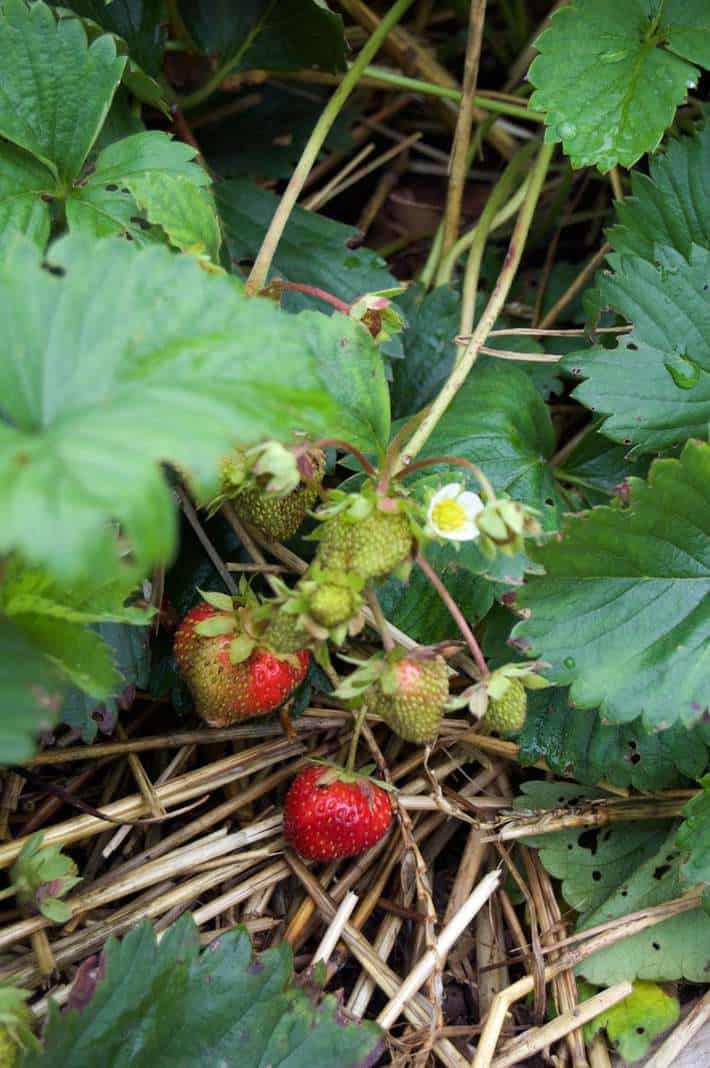
There's a reason they're called "straw" berries. Put a layer of straw underneath your strawberry plants to help keep dirt dwelling insects and moisture off of the berries. Your berries will rot less quickly and never have any dirt or guck on them. You'll be able to pick them clean off of the plant and pop them right in your mouth.
NOTE: Straw can also be a happy haven for slugs, so watch for them and act appropriately with a Slug Chug.
If you're in the US you can use Sluggo which apparently is some fantastic organic slug killer that we can't get in Canada. I haven't looked into it too much.
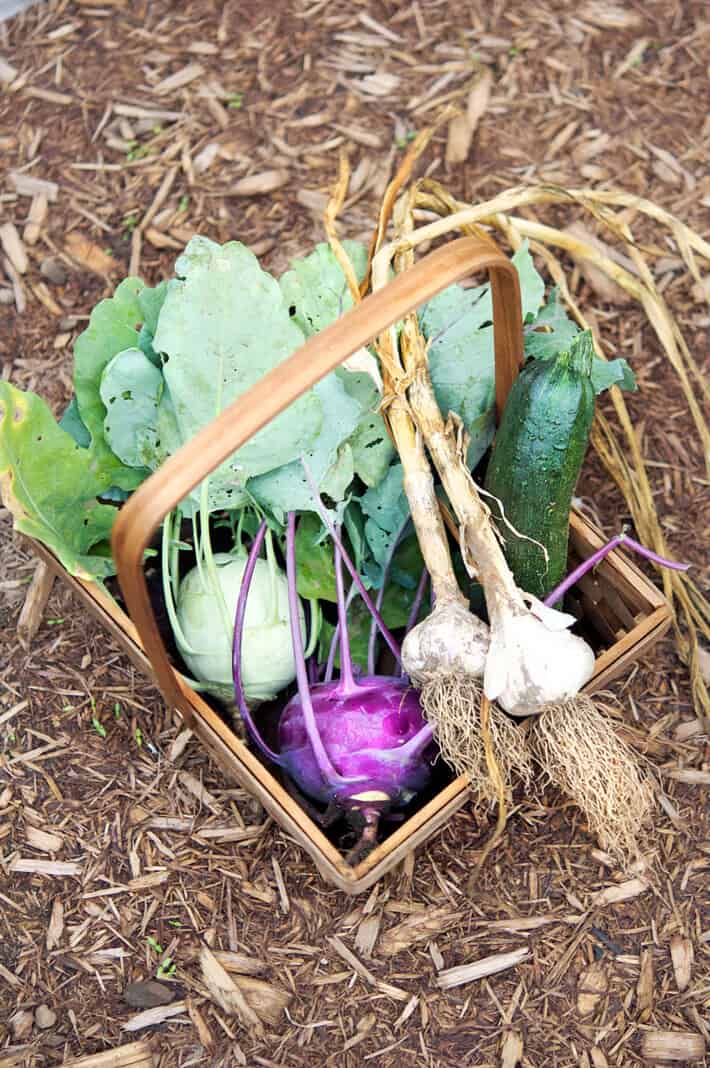
No tip here. Just a pretty picture to entice you into growing your own vegetables if you don't already. Green and purple kohlrabi, fresh pulled garlic and the ubiquitous zucchini.
Tip #20 - Bed Size
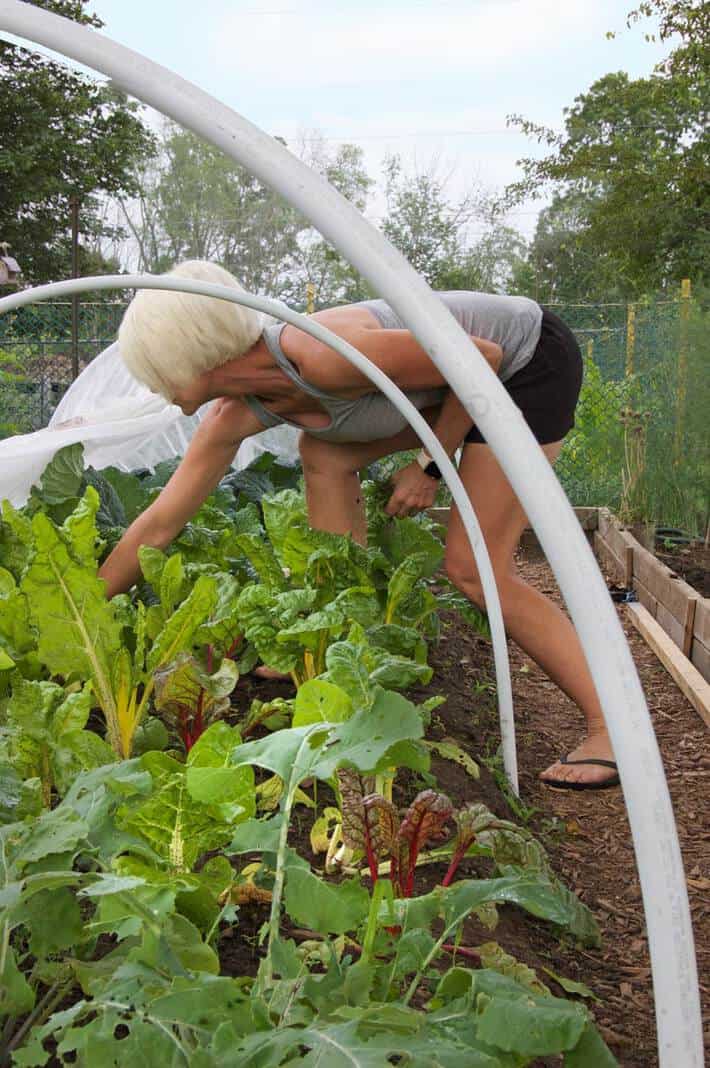
Garden beds are typically 4' wide but if that's too wide for you and your short little freak-show arms, then do them 3'6". When designing your garden make sure it fits YOU.
Also, try to have at least one path that's wide enough for a wheelbarrow if you plan to use one and make sure paths between the beds are big enough to walk and kneel in. You don't need much more than that but you do need room to walk, turn around and work.
I keep paths the width of my 18" rake, which means I just need to do one swipe with the rake to clear or clean the path.
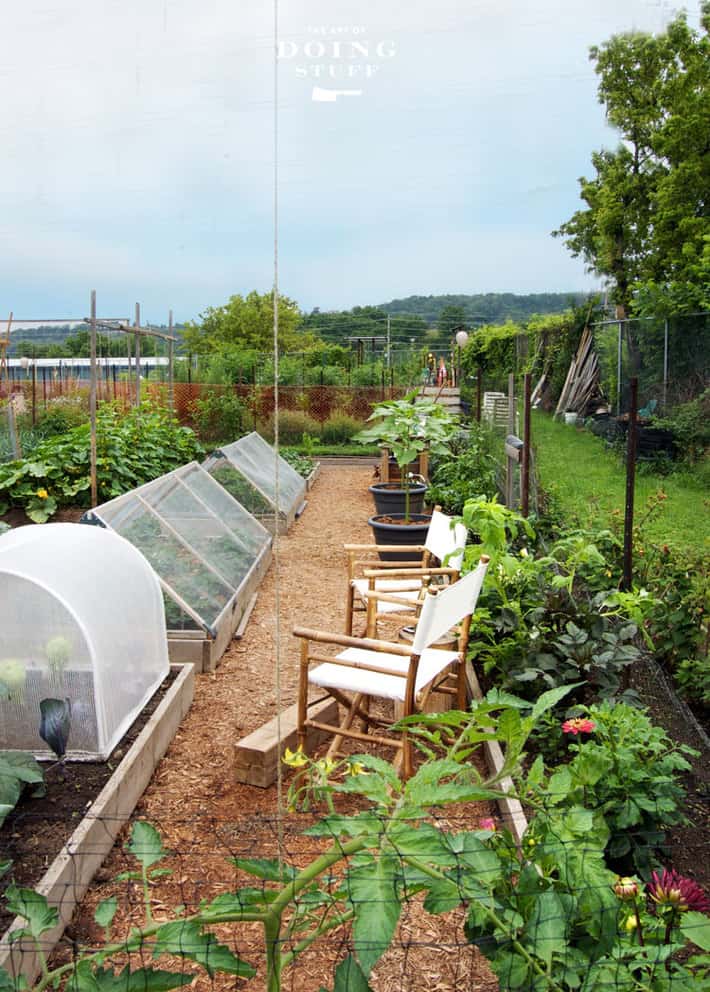
If you really love gardening then take the time to make your garden nice and grow what you like. Or what your friends and family like. Make it a place that's fun to be as opposed to a place you resent being it. It may take a few months of gardeners rage and resentment before you get to the "fun" place but as long as you eventually get there you'll be able to work through the rage.
Bonus Tip - Don't forget the pretty
Europeans have understood the beauty of vegetable gardens for centuries. Potager type gardens evolve outside the kitchen doors of homes in England, France and Italy. There's a beauty in growing your own food and your garden can reflect that.
Keep it simple, keep it weeded and keep it alive. Also ... keep the back of it full of flowers. When all else fails you'll have your zinnia to look at.
Let's end today with a knock knock joke.
Knock knock.
Who's there?
Just some old ho.
Perfect. I have a bed right here for you.


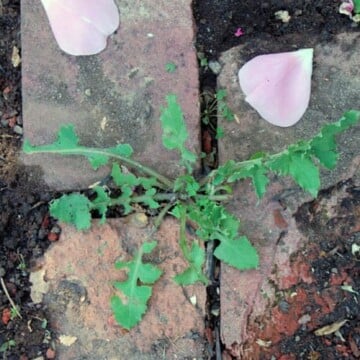


Nancy Blue Moon
I have always thought that fresh fruit and veggies are so beautiful...I'm also proud of the fact that you grow enough to donate to others! Good work my friend...your family and your country should be proud of you!
Renee Ryz
Garden doing wonderfully. I did not get a chance to use the tomato growing method you wrote about, trying that next year. I had a yellow pear tomato loaded with lovely little beauties. Only to have it succumb to some sort of wilt, and I pulled it out to save the rest. Never had it before, and I am panicked as to what I should do. I cannot really rotate crops too much, as I have a small garden. 2 small plots of 8 x 3.5. Any ideas? I must have tomatoes, especially the SunGold!!!
kathy
I am done in by all the work you did. It is so pretty, healthy, and awesome productive. I thought rabbits hopped up to eat in the garden and didn't know they would dig. I get the 6 inches into the ground to make them give up but the flimsy for raccoons I'm lost. Last year 2 long pots of kale, so full of holes I don't know how someone can grow enough for a store. I went through picture by picture like you'd taken me to the sistine chapel. Thanks
Dianna
Gorgeous, gorgeous, gorgeous garden. Well done, Karen.
You have motivated me to go out and help hubby weed more. And I'll lay some newspapers & mulch to make it easier to come.
Thank you SO much for sharing your tips!!
Mary W
Loved seeing the pictures and reading your post today - brings back wonderful memories of good tasting vegetables and great work outs. I sure felt better when outside gardening. I'm so glad you decided to be a blogger!
Barbara
All great advice for the gardener, whethter a large or small plot. At present I have two gardens, one my row garden, has your type raised soil, frameless beds and the other one, consists of wood framed raised beds 16 inches tall, 4 feet wide and 20 feet long. The top of these wooden walled raised beds are covered with a 2 x 6 that sits flat and I can sit on while weeding ,seeding or harvesting. Glad you can encourage snakes in your area of the world however down in my area, Eastern Tennessee, copperhead venomous snakes love stacked wood, planks or brush so that's a no no for us. I love all your covers and tents, they really look great and do a fabulous job too. Really love the variety of veggies you are planting too. I found that when I raised corn in my raised beds garden that a strong wind from a thunderstorm could knock the stalks flat so I tied a section of hog or cattle panel,(ridged heavy guage wire welded in a 6 inch x 6 inch layout) that is available in several heights by 16 feet long, to six tee posts and it came in handy to help hold up my corn. I started out using the panel laying flat on the soil, planted the corn so it would grow up through the 6 x 6 sections and then as the corn grew I slowly raised the wire panel to help support the stalks. It's worked great! Hope it helps out some other folks with my issue.
Karen
That's genius Barbara! I want hog fencing for a BUNCH of different stuff but I don't have a truck so I can't transport it from the store to my garden. :( It for real is one of most frustrating things ever. ~ karen!
Suzanne LH
Would it be worth renting one from Home Depot once a year, maybe with a friend?
Barbara
I ended up taking some heavy duty bolt cutters with me to the farm store when I bought the hog paneling and cut the panels in half so mine ended up 8 feet long by 42 inches tall. I've used them as a fencing around my row garden, my covered chicken run and to trellis my pole beans and to support many other veggies, from cucmbers to melons. Another trick , if you have a store similar to Lowes or Home Depot or even a concrete supply company , is to buy the welded wire rewire that goes between concrete block courses and use to make hoop supports for mesh woven fabric or chicken wire. They are much less expensive than the ones found on gardening product sites. Hope this is helpful to others too.
Susan
I put up u-channel fence posts on the corners of my plot of corn, then stretch nylon trellis across it, horizontal to the ground, at two heights. The trellis has 7" "holes," so the corn happily grows up through it without me doing anything more. Then I just have to beat the animals to it when it's ripe (-:
Alena
It looks fabulous and it makes me feel like I am the world's biggest sucker.
Eileen
Oh...WOW! I am so impressed...and exhausted just looking at all that work....
I've been nylon-stocking covering and hot peppering my tomato plants to try and keep some for myself (the squirrels chew on them, this year for the first time right through the nylons!) and making strings of cds to hang in the fig tree in the hope of getting some of those as well. The gooseberry bush kept the catbirds well fed earlier this summer, after they and the mockingbirds finished off the black raspberries. The yellow finches love nibbling on the Thai basil, but they aren't greedy. I took a peach tree out again after the raccoons managed to get into or through every type of barrier I put up.
Heather
How do I upload a photo? I was thinking of showing you my crazy, weedy garden to make you feel even better about your movie-star good looks plot. Amazing! It's amazing! You're amazing! You inspired me to plant the garden - and I'm getting a surprising amount of food out of the mess I've made along the side of my house - and now you've inspired me to weed. Next year! Thanks, Karen. : )
kennedy
I have no words except lovely. That's my kind of garden. Gardening is serious business.
Laura
So dreamy! This post is so informative and smart... I wanna visit one day!
Katie C.
Karen,
I have to thank you. It was your blog that finally convinced me that I could and should plant a vegetable garden. I'm on my second year with my four 4'x6' raised beds and I absolutely love them. Like love, love them. They are seriously my favorite place to be and I can't get enough of telling people I know that I grew the food they're eating! (Like the cucumber salad I made with the 18" cucumber in the picture and some cosmic purple carrots I grew!)
Karen
Nice! I couldn't even get my English cucumbers to grow this year. :( They got wilt. I'm very, very happy to have inspired you to start a vegetable garden. :) ~ karen!
Meredith
How much time do you spend weeding per week? Weeds are my constant battle. I work full time and if I have one weekend that is entirely rainy or scorchingly hot and don't get out to the garden to weed, its out of control then, and I can't get it back. This year I"m putting landscape fabric down on the paths, so at least they will be weed free. Newspaper and chicken house wood chips/grass cuttings just don't last long enough.
Also, does anyone ever steal from your garden? All that garlic hanging over the fence would be tempting to a lot of people.
Karen
Hi Meredith. No problems with stealing at the garden. It's a community and we all know each other and as far as I know no one goes around stealing food from one another. As far as weeding goes, I couldn't put a time on it. I just weed every time I go to the garden even if it's only for 10 minutes. They're already getting less and less. By next year it'll be even LESS. :) ~ karen!
Allison Gorham
you rock, Karen....thank you for your wonderful insight and inspiration...your posts make my days better. Keep up the good work!!!
A guy
I am more of a landscaper than a gardener, but I think this may be your best post ever. Comma usage needs some work, but overall nicely done.
Judith
Yo, major garden envy over here. My garden is actually similar to yours in layout but about half the size. And in the same vein, my melon plants are similar to yours but about 1/1,000,000,000 of the size. I'm starting to suspect the mid-Sweden climate might not be the best for hot-weather plants.
Karen
Hi Judith. You can also get row cover that has insulating properties and so it will increase the temperature beneath it. Also if you lay down black, thermal plastic on the soil a couple of weeks before you plant the melons it'll warm up the soil by 10-15 degrees. Do those two things together and you might be able to create a microclimate perfect for melons. ~ karen!
Judith
Whoa - didn't realize thermal plastic would warm the soil that much. I think it's too late to get a harvest this year but I'll definitely try these things next year! Many thanks <3
Lynn
So much helpful info--such pretty pictures!! We are going to plow up the front yard & plant another garden there next spring but will be working on it throughout the winter--weather permitting! We want it to be pretty as well as productive--thanks for all the great tips!!
Monique
BRAVO!
I hope that says it all:)
I have no expletives left :)
Pamela Marshall
Wow, what a pretty garden! You are an inspiration to me. Thank you for all tips. I definitely need to cover my kale and Brussels sprouts. It may be too late now but I think I will try the floating row cover method anyway. Also thank you for the suggestions on the Honeynut squash. I have been growing butternut for years and something new would be fun. Do you have any mushrooms? I started a shiitake log last year and am getting a few 'shrooms this years. They are delicious in eggs.
Karen
I'm not a huge mushroom eater Pamela, but I've always wanted to try growing mushrooms. I haven't as of yet done it. :) ~ karen!
Chris White
Enjoyed this so much! Thrilled to learn of your potato obsession. In NS, my granddad always planted huge gardens to share with the families of his seven children. One 'patch' included varieties of red, white and blue potatoes. The red potatoes were only ever served with white meat, white potatoes were served with red meats, and blue were the special reserve to be used with fish dishes. Every time I sauntered the field from our house to theirs to grab potatoes from the cellar, I had to announce what kind of meat my mother was cooking for supper before I could get my bag!
Karen
Love that!! ~ karen